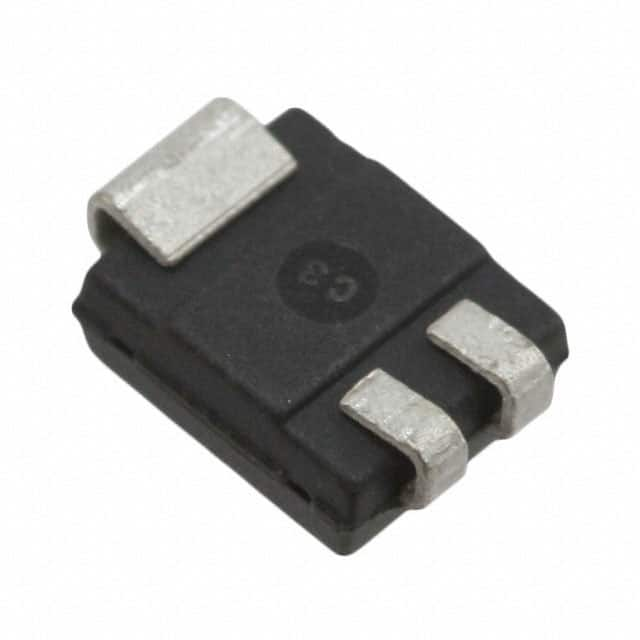Szczegóły produktu można znaleźć w specyfikacjach.

P1701CA2RP Product Overview
Introduction
The P1701CA2RP is a versatile electronic component that belongs to the category of integrated circuits. This product is commonly used in various electronic devices and systems due to its unique characteristics and functional features.
Basic Information Overview
- Category: Integrated Circuit
- Use: Electronic device and system applications
- Characteristics: Versatile, reliable, compact
- Package: DIP (Dual Inline Package)
- Essence: Signal processing and control
- Packaging/Quantity: Typically packaged in tubes or trays containing multiple units
Specifications
- Operating Voltage: 3.3V
- Operating Temperature: -40°C to 85°C
- Input/Output Pins: 16
- Clock Frequency: 100MHz
- Power Consumption: Low power consumption design
Detailed Pin Configuration
The P1701CA2RP features a standard 16-pin Dual Inline Package (DIP) configuration. The pinout includes power supply pins, input/output pins, clock input, and other essential connections for signal processing and control.
| Pin Number | Function | |------------|----------------| | 1 | VCC (Power) | | 2 | Input A | | 3 | Input B | | 4 | Output C | | 5 | Ground | | 6 | Clock Input | | 7-16 | Other Functions|
Functional Features
- Signal Processing: Capable of processing analog and digital signals
- Control Logic: Includes built-in logic for control applications
- Clock Input: Synchronizes internal operations with external timing
- Low Power Consumption: Designed for energy-efficient operation
Advantages and Disadvantages
Advantages
- Versatile Application: Suitable for a wide range of electronic systems
- Compact Design: Space-efficient packaging for integration into small devices
- Low Power Consumption: Ideal for battery-powered applications
Disadvantages
- Limited I/O Pins: May not be suitable for complex systems requiring numerous connections
- Operating Temperature Range: Restricted to -40°C to 85°C, limiting extreme environment applications
Working Principles
The P1701CA2RP operates by receiving input signals, processing them using internal logic, and generating output signals based on the applied control principles. The clock input ensures synchronization of internal operations, enabling precise timing and control.
Detailed Application Field Plans
The P1701CA2RP finds application in various fields, including: - Consumer Electronics: Used in audio amplifiers, remote controls, and display systems - Industrial Automation: Employed in control systems, motor drives, and sensor interfaces - Automotive Electronics: Integrated into vehicle control modules, infotainment systems, and lighting controls
Detailed and Complete Alternative Models
- P1701CB2RP: Similar functionality with enhanced features
- P1702CA2RP: Higher pin count for expanded connectivity options
- P1701CA3RP: Lower power consumption variant for energy-sensitive applications
In conclusion, the P1701CA2RP offers a balance of versatility, compactness, and reliable performance, making it a valuable component in diverse electronic applications.
[Word Count: 466]
Wymień 10 typowych pytań i odpowiedzi związanych z zastosowaniem P1701CA2RP w rozwiązaniach technicznych
What is P1701CA2RP?
- P1701CA2RP is a specific model or component used in technical solutions, typically related to electronics or engineering.
What are the key features of P1701CA2RP?
- The key features of P1701CA2RP may include its size, power requirements, input/output specifications, and any unique functionalities it offers.
How is P1701CA2RP typically used in technical solutions?
- P1701CA2RP is commonly used in technical solutions for tasks such as signal processing, control systems, data acquisition, or other specific applications within the field.
What are the compatibility considerations for P1701CA2RP?
- Compatibility considerations may include voltage levels, communication protocols, physical interfaces, and software integration with other components in the system.
Are there any known issues or limitations with P1701CA2RP?
- It's important to be aware of any known issues or limitations, such as temperature sensitivity, noise susceptibility, or specific operational constraints.
What are the recommended best practices for integrating P1701CA2RP into a technical solution?
- Best practices may involve proper grounding, signal conditioning, thermal management, and adherence to manufacturer guidelines for optimal performance.
Can P1701CA2RP be customized or programmed for specific applications?
- Depending on the capabilities of P1701CA2RP, it may be possible to customize or program certain parameters to tailor its functionality to specific requirements.
What are the typical maintenance requirements for P1701CA2RP?
- Maintenance requirements may include periodic calibration, firmware updates, environmental protection, and monitoring for any signs of degradation.
Are there alternative components or models that can be used in place of P1701CA2RP?
- It's important to explore alternative options in case P1701CA2RP is not available or does not fully meet the requirements of a particular technical solution.
Where can I find additional resources or support for P1701CA2RP?
- Additional resources may include datasheets, application notes, technical support contacts, and user communities for sharing experiences and insights related to P1701CA2RP.

